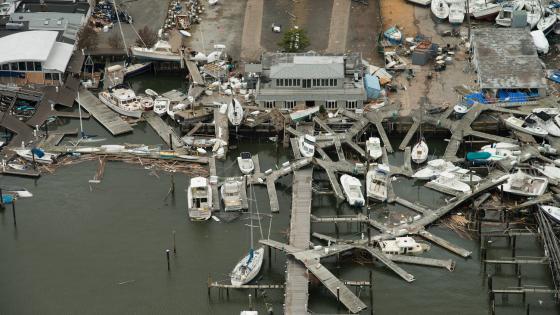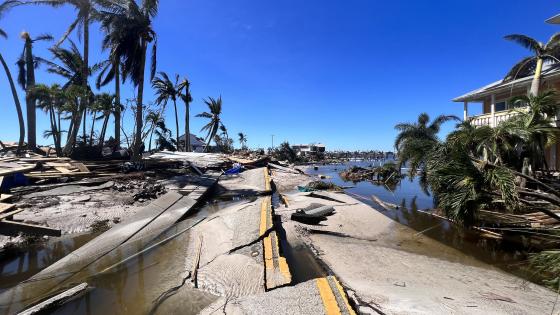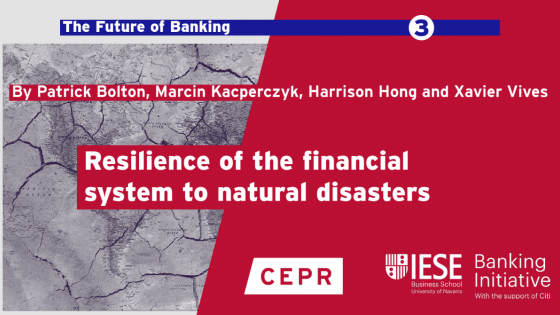As climate change intensifies, its impacts become increasingly undeniable. July 2023 stands out as the hottest month ever recorded on Earth (Thompson 2023). Projections indicate that the frequency and severity of extreme weather events, including natural disasters, will continue to escalate with advancing climate change (IPCC 2014, 2022). As the bulk of the social and economic costs are yet to fully materialise, discussions among economists and policymakers regarding the economic and political ramifications of climate change are gaining momentum (e.g. Carney 2015, Batten 2018, Olovsson 2018, Rudebusch 2019, Batten et al. 2020, Lagarde 2020, ECB 2021, Vives et al. 2021, Gagliardi et al. 2022, Pleninger 2022).
Indeed, the repercussions of climate change inevitably intersect with the primary objectives of central banks and fiscal authorities, despite climate change mitigation not being their primary mandate. For instance, central banks must deepen their understanding of how natural disasters and broader climate change phenomena impact economic activity, inflation, and financial stability, along with comprehending the transmission mechanisms underlying these impacts. For fiscal authorities, understanding these impacts is essential as well. Climate change could strain public debt levels, complicating their management and potentially heightening the vulnerability of public finances. Anticipating and accommodating the impact of climate change is thus crucial for the policy decisions of central banks and fiscal authorities and, more broadly, for their support of the societal transition to a carbon-neutral economy.
In Eickmeier et al. (2024), we examine the dynamic transmission of natural disasters to the US aggregate economy. We focus on those disasters that are expected to intensify due to climate change, i.e. severe floods, storms, and extreme temperature events. We rely on local projections using monthly data over the pre-pandemic sample since 2000. Our impulse variable reflects the number of natural disaster events in the US in a given month (Figure 1), and we examine the effect of a one standard deviation increase in that variable (which amounts to 1.7 disasters). In this column, we show responses of selected variables to the disasters. The full set of impulse responses can be found in Eickmeier et al. (2024).
Figure 1 Number of natural disasters per month in the US
Notes: Number of extreme temperature events, floods, and storms in a given month.
Profound and widespread adverse effects of natural disasters
We find that natural disasters trigger significant and enduring negative aggregate impacts on the real economy. The unemployment rate rises gradually and persistently by 0.5 percentage points (Figure 2). The real effects are broad-based, as they manifest across various sectors, including labour and housing markets, production, consumption, and investment. Furthermore, our analysis reveals that disasters temporarily elevate consumer prices, likely driven by transient increases in energy and food costs (see Figure 3).
Figure 2 Impulse responses of unemployment rate (percentage points) and consumer prices (%)
Notes: Grey areas indicate 68% and 90% confidence bands. x-axis: months.
Figure 3 Impulse responses of core consumer prices, food prices, and energy prices (%)
Notes: CPIExFoodENergy: consumer price index excluding food and energy prices, CPIFood: food-specific consumer price index, CPIEnergy: energy-specific consumer price index. Grey areas indicate 68% and 90% confidence bands. x-axis: months.
The adverse real effects can be attributed to a widespread decline in confidence, an increase in uncertainty, a tightening of broad financial conditions, encompassing financial risk perceptions, and heightened awareness of climate change (see Figure 4). Indeed, climate attention can serve as an additional channel of transmission. The way individuals perceive the link between natural disasters and climate change likely influences their adaptation strategies, preferences, and broader behaviour, thereby impacting the real economy. We also observe a widespread rise in bank risk and the economy's susceptibility to future bank risk following the disasters, coupled with a decrease in holdings of (comparatively secure) treasury securities. Conversely, banks appear to be adjusting their portfolios toward safer business and real estate loans, potentially to mitigate the heightened risk.
Figure 4 Impulse responses of confidence, media attention toward climate change, and financial uncertainty and risk (%)
Notes: BusConf: business confidence index, ConsSent: consumer sentiment, ClimChangeNewsp: newspaper coverage on climate change. Financial uncertainty based on Jurado et al. (2015), NFCI (in ordinary units): Chicago Fed national financial conditions index, BankStockMktVola: bank stock market volatility. Grey areas indicate 68% and 90% confidence bands. x-axis: months.
Monetary and fiscal policy variables move in the direction that could contain negative macroeconomic impacts (see Figure 5). Anchored inflation expectations appear to help contain price pressures. However, we find a persistent increase in public debt relative to GDP, exposing the US government to heightened vulnerability in future adverse scenarios. Furthermore, our results suggest a long-lasting decline of r star, limiting future space to manoeuvre for monetary policy as well.
Figure 5 Impulse responses of monetary policy and fiscal variables (% for government spending, percentage points for all other variables)
Notes: FFR: fed-eral funds rate, SSR: shadow short rate provided by Wu & Xia (2016), RStar: one-sided estimate for r-Star by Laubach & Williams (2003), GovSpend: government total expenditures, PublDebtToGDP: total public debt in % of GDP. Grey areas indicate 68% and 90% confidence bands. x-axis: months.
Our results are robust against a large variety of alterations. For instance, we consider individual disaster types, i.e. storms, floods, extreme temperature events, separately; we exclude Hurricane Katrina and the subsequent months from the analysis; we also account for persistence of the impulse variable; and we vary the lag structure of our local projections setup. In a complementary analysis, we analyse the impact of media attention toward climate change on the macroeconomy and find effects on the unemployment rate and consumer prices that are comparable to those following natural disasters. Furthermore, we demonstrate that the effects of natural disasters at the aggregate level differ markedly from their local impacts, reconciling studies which consider local effects of local disasters and those which examine aggregate effects.
As a caveat, just like previous empirical papers, our analysis captures past adjustments. Yet, most of the costs and adjustments are yet to materialise as natural disasters are projected to intensify and occur more frequently. Furthermore, as people increasingly associate these events with climate change, the manner in which the economy adjusts will critically hinge upon individual and collective behavioural responses, making their duration, sign, or size challenging to predict. Despite these uncertainties, we feel confident that our research contributes to a better understanding of the aggregate effects of natural disasters and informs policymakers on possible interventions which could lead to better outcomes.
Summary
Overall, our analysis underscores the profound and widespread negative impacts of natural disasters on the real economy, financial markets, and crucial policy variables. This highlights the urgent need for immediate actions to combat climate change and bolster economic and financial resilience. While our findings indicate that macroeconomic policies have provided some support during these disasters, suggesting possible ways to mitigate their economic impacts, the sustainability of these measures remains in question amidst ongoing climate change. Specifically, as climate change continues to exert downward pressure on r star and elevate public debt levels, the effectiveness of monetary and fiscal policies in managing the economic repercussions of natural disasters may be compromised. Enhancing economic and financial resilience against such shocks becomes increasingly paramount, underscoring the need for immediate and strategic actions to combat climate change and its far-reaching effects.
References
Batten, S (2018), “Climate change and the Macro-Economy: A critical review”, Staff Working Paper No. 706.
Batten, S, R Sowerbutts and M Tanaka (2020), “Climate change: Macroeconomic impact and implications for monetary policy”, in Ecological, Societal, and Technological Risks and the Financial Sector, Springer, pp. 13–38.
Carney, M (2015), “Breaking the tragedy of the horizon–climate change and financial stability”, Speech given at Lloyd’s of London 29, 220–230.
ECB (2021), “Climate change and monetary policy in the euro area”, Occasional Paper Series 271.
Eickmeier, S, J Quast and Y Schüler (2024), “Macroeconomic and financial effects of natural disasters”, CEPR Discussion Paper 18940.
Gagliardi, N, S Pamies and P A Arévalo (2022), “The fiscal impact of extreme weather events: First evidence for EU countries”, VoxEU.org, 23 December.
IPCC (2014), Climate change 2014: Synthesis report, contribution of working groups I, II and III to the fifth assessment report of the intergovernmental panel on climate change.
IPCC (2022), Climate change 2022: Impacts, adaptation and vulnerability.
Jurado, K, S C Ludvigson and S Ng (2015), “Measuring uncertainty”, American Economic Review 105: 1177-1216.
Lagarde, C (2020), “Debate about the annual report”, Closing remarks of Christine Lagarde, President of the ECB, on the occasion of the presentation of the ECB Annual Report 2018 at the European Parliament, Strasbourg, 11 February.
Laubach, T and J C Williams (2003), “Measuring the natural rate of interest”, Review of Economics and Statistics 85: 1063–1070.
Olovsson, C (2018), “Is climate change relevant for central banks?”, Sveriges Riksbank Economic Commentaries 13.
Pleninger, R (2022), “Natural disasters reduce middle-class incomes”, VoxEU.org, 28 October.
Rudebusch, G D (2019), “Climate change and the Federal Reserve”, FRBSF Economic Letter 2019-09.
Thompson, A (2023), “July 2023 is hottest month ever recorded on earth”, Scientific American, 27 July.
Wu, J C and F D Xia (2016), “Measuring the macroeconomic impact of monetary policy at the zero lower bound”, Journal of Money, Credit and Banking 48: 253–291.
Vives, X, H Hong, M Kacperczyk and P Bolton (2021), “Resilience of the financial system to natural disasters”, VoxEU.org, 25 May.











